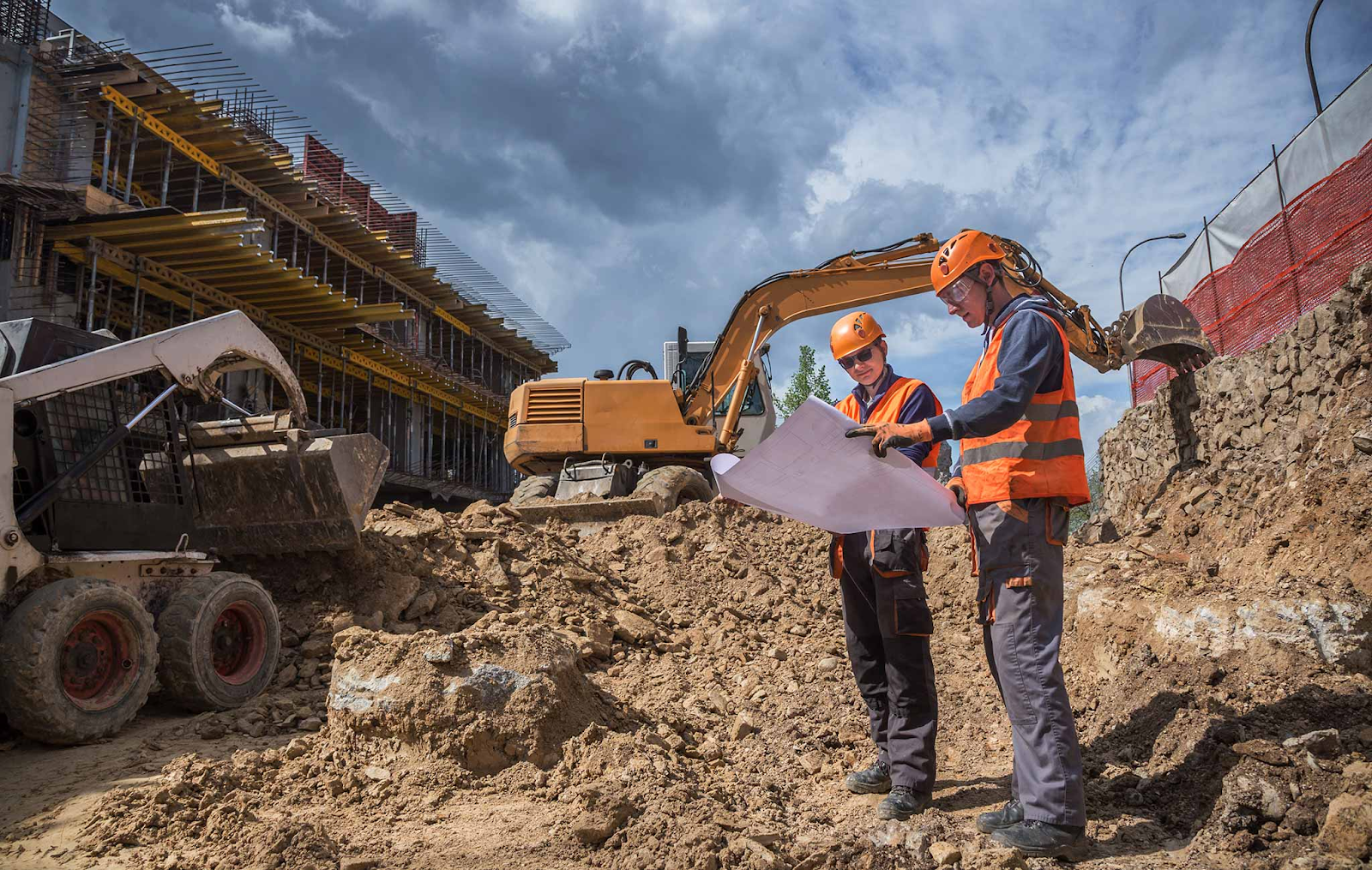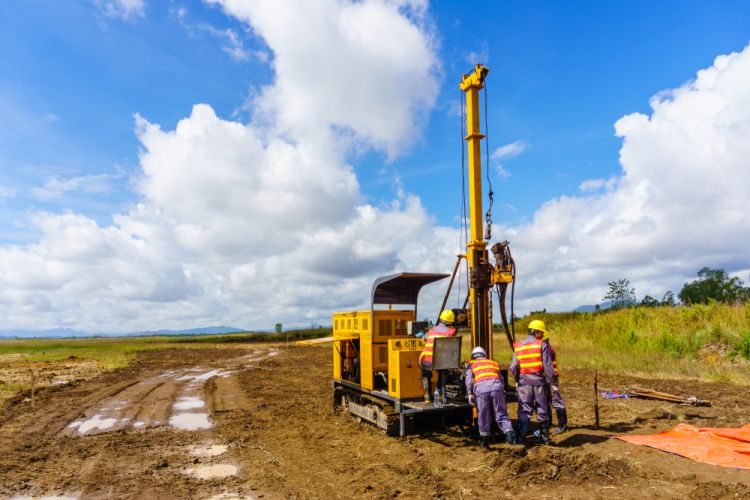Geotechnical Engineering For Construction Projects Can Be Fun For Everyone
Indicators on Geotechnical Engineering For Construction Projects You Need To Know
Table of ContentsExcitement About Geotechnical Engineering For Construction ProjectsSome Of Geotechnical Engineering For Construction ProjectsRumored Buzz on Geotechnical Engineering For Construction Projects10 Simple Techniques For Geotechnical Engineering For Construction ProjectsSome Ideas on Geotechnical Engineering For Construction Projects You Need To KnowNot known Facts About Geotechnical Engineering For Construction ProjectsUnknown Facts About Geotechnical Engineering For Construction Projects
Principles and Method of Ground Improvement. Ground Improvement Principles And Applications In Asia. Layout analysis in rock auto mechanics.Cengage Learning, Stamford, 666 p. Atkinson, J., 2007. The mechanics of soils and foundations. Taylor & Francis, N.Y., 442 p. Drifting Offshore Wind Wind Turbines: Feedbacks in a Sea state Pareto Optimal Designs and Economic Evaluation, P. Sclavounos et al., October 2007. Nicholson, D, Tse, C and Cent, C. (1999 ). The Observational Technique in ground design concepts and applications.
Some Of Geotechnical Engineering For Construction Projects
Laboratory and area screening plays a vital function in this process. By extracting examples from the planet's subsurface and using a suite of tests, geotechnical designers can anticipate the behaviour of soil layers and assess their viability for numerous construction efforts. The significance of geotechnical engineering in civil engineering can not be overstated, attributable to numerous variables: The initial action in any type of geotechnical research study entails determining the dirt type at the building and construction website.
Recognizing these features ensures that just ideal soil kinds are selected for the development, thus preventing potential structural failures. The structure serves as the bedrock of any type of building and construction job. Picking the ideal foundation type is a choice that rests on the thorough analysis provided by geotechnical engineering. This makes sure the long life and security of frameworks by fitting the lots they will birth.

Geotechnical site investigation is an important action in the preparation and implementation of any kind of building and construction job. It involves the collection and analysis of information connected to the physical homes of soil and rock beneath a proposed construction website. This info is crucial for the layout and building and construction of secure, steady, and sustainable frameworks.
Indicators on Geotechnical Engineering For Construction Projects You Need To Know
In this blog, we will certainly explore the significance of geotechnical site investigation, its various parts, and how it benefits building and construction tasks. Geotechnical site examination, additionally called subsurface exploration, entails a collection of tasks aimed at figuring out the dirt, rock, and groundwater conditions at a building website. The primary objectives are to determine prospective geotechnical dangers, evaluate the design homes of subsurface materials, and offer recommendations for the layout and construction of foundations, maintaining walls, and various other frameworks.
The desk research study assists in recognizing possible geotechnical issues and intending the subsequent fieldwork. This involves observing the topography, drain patterns, existing structures, greenery, and any kind of signs of instability or erosion.
The smart Trick of Geotechnical Engineering For Construction Projects That Nobody is Talking About
Superficial test pits are excavated to directly observe and example the dirt and rock. This technique works for examining the upper layers of the subsurface and recognizing near-surface threats. Non-invasive geophysical techniques, such as seismic refraction, ground-penetrating radar (GPR), and electrical resistivity tomography (ERT), are used to map subsurface problems and spot abnormalities.
Soil and rock examples collected throughout the area examination go through lab testing to identify their physical and mechanical residential or commercial properties. Typical laboratory examinations include grain dimension evaluation, Atterberg limits, compaction examinations, triaxial shear examinations, and consolidation examinations. These examinations give important information for geotechnical evaluation and design. The information collected from the workdesk research study, website reconnaissance, area investigation, and research laboratory testing are evaluated and analyzed to create a detailed understanding of the subsurface problems.
The key advantage of geotechnical site examination is guaranteeing the security and security of frameworks. By understanding the subsurface problems, engineers can design structures and other structural components that can hold up against the lots and environmental forces they will go through. This lessens the risk of settlement, subsidence, and architectural failing.
Facts About Geotechnical Engineering For Construction Projects Revealed
This guarantees effective and secure building and construction practices. Geotechnical website examinations are commonly needed by building codes and guidelines.
This details is very useful for job supervisors, architects, and specialists in developing practical schedules, spending plans, and backup plans. Geotechnical Engineering for Construction Projects. Skyscraper Building in a Coastal AreaIn a seaside city, a skyscraper domestic structure was intended on a website with straight from the source thought loosened sand down payments and a high water table. An in-depth geotechnical investigation, consisting of see it here borehole boring, CPT, and geophysical surveys, was carried out
Indicators on Geotechnical Engineering For Construction Projects You Need To Know
Based on these searchings for, the structure design was changed to include deep heap structures prolonging into stable strata, and ground enhancement methods, such as vibro-compaction, were implemented to minimize liquefaction threats. This positive method guaranteed the safety and security of the building while preventing pricey post-construction removal. Infrastructure Growth on a Sloping TerrainA significant facilities task, entailing the building and construction of a freeway and bridges, was intended on a sloping terrain with steep inclines.

The Leaning Tower of Pisa (Italy), a renowned architectural marvel, is infamous for its unintentional tilt from significant geotechnical concerns. The tower's foundation was improperly made to manage the soft, unstable soil underneath it, bring about uneven negotiation and you could check here its unique lean. Our world is dotted with excellent facilities projectsfrom towering high-rise buildings to sprawling bridgesall standing statement to the development of the various building tools and techniques offered.
Geotechnical engineering is a specific field within civil design that concentrates on researching the habits of planet products. This branch digs deep right into the groundinvestigating just how the soil, rock, and groundwater at a building and construction site can influenceand be affected bythe infrastructure that we erect on and into them. Before a solitary brick is laid or a concrete structure poured, geotechnical designers probe into the earthgathering important information about the site's dirt structure, rock framework, and groundwater levels.
The Geotechnical Engineering For Construction Projects Statements

is a device utilized to assess the honesty and load-bearing capability of stacks during installation, leveraging the concept of wave propagation. It enhances construction performance by offering real-time assessments, therefore ensuring safe and effective stack foundations. One of the useful applications of geotechnical design involves choosing and carrying out the best techniques for structure building.
Load driving stands for even more than the simple act of placing structural aspects into the ground. As a matter of fact, it is a carefully orchestrated procedure of transferring a structure's load past the less stable dirt layers better to the surfacedown to the extra substantial strata that lie below. When it comes to heap driving, take into consideration how geotechnical engineers adeptly utilize this method to evenly distribute the structure's weight.